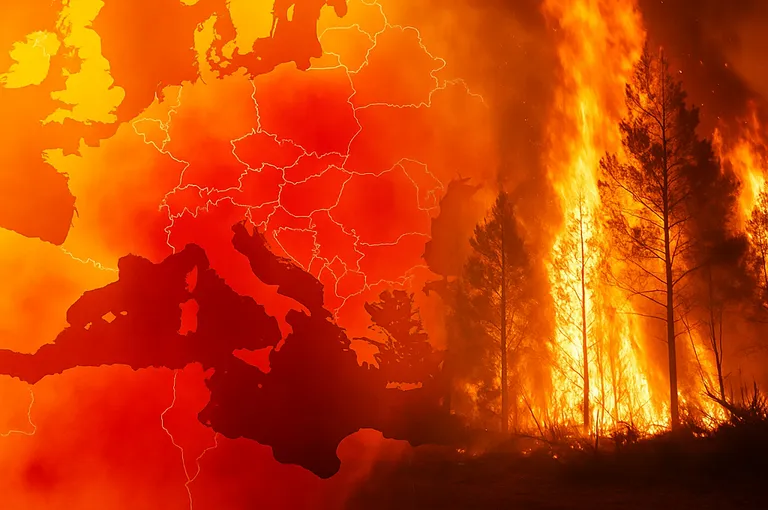Europe’s extreme summer heat wave continues its destructive path, with temperatures now moving eastward after scorching Western Europe.
⚠️ Forecasters are warning of dangerous heat levels across Central Europe, including parts of Slovakia, Hungary, and Bosnia and Herzegovina.
Meanwhile, countries like Spain and Greece are battling the deadly consequences — from wildfires and evacuations to power disruptions and tragic fatalities.
🌡️ Where the Heat Is Heading
Meteorologists say:
- Western Europe is beginning to cool slightly, especially in France and Portugal
- But Central and Southeastern Europe are now bracing for days of extreme heat, with some areas expected to exceed 40°C (104°F)
Several European climate agencies have issued Red Alert heat warnings, especially for:
- Slovakia
- Bosnia and Herzegovina
- Serbia
- Northern Greece
🔥 Wildfires and Evacuations
The heat has intensified drought conditions and fueled wildfires across Southern Europe:
- In Spain, wildfires in Valencia and Andalusia have already killed four people and forced thousands to flee.
- On the Greek island of Crete, at least 1,500 people — including many tourists — were evacuated from hotels and homes.
- Emergency crews across the continent are on high alert for wind-driven flare-ups.
Authorities are warning that more evacuations may come as the heat continues.
⚛️ Nuclear Power Reactors Shut Down
In an alarming development, nuclear power plants in France and Switzerland have been forced to shut down reactors due to overheating.
Why?
- The facilities use river water for cooling, but elevated water temperatures made this impossible.
- At least three reactors have been paused as a result — risking regional energy shortages during the peak of summer demand.
This highlights a growing vulnerability in Europe’s energy infrastructure in the face of intensifying climate conditions.
🧠 A Larger Climate Warning
Scientists warn that:
- These extreme temperatures are part of a broader pattern of accelerating climate change
- Europe is warming twice as fast as the global average
- Drought, crop loss, blackouts, and migration pressures may increase in the coming years
“What we’re seeing is no longer just a heat wave — it’s a new climate reality,” said a spokesperson from the European Environment Agency.
By ✍️ Yorlinda Ramirez - MicuPost Team



